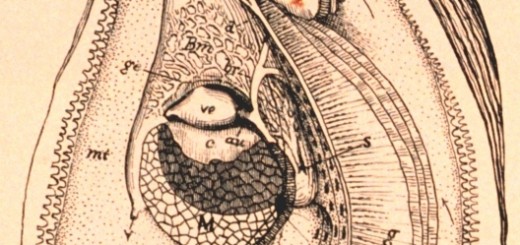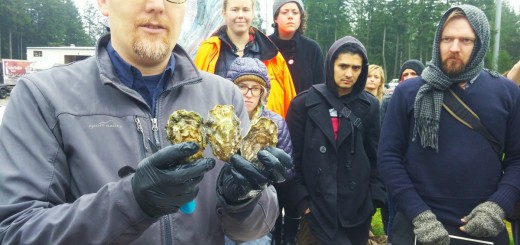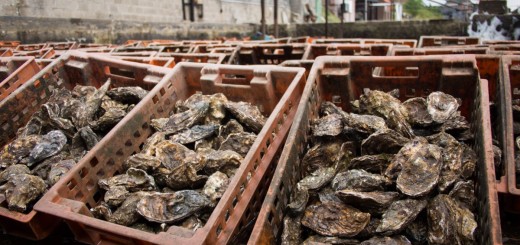Natural History of Oysters
Crassostrea gigas, or commonly known as the Pacific oyster, has had a long cultivation history throughout the world. Originating from Japan and the coast of Asia; the Pacific oyster has spread to Canada, the USA, Mexico, Chile, Argentina, Australia, New Zealand, China, France, Ireland, Norway, Spain, Morocco, South Africa and many more. One of the reasons the Pacific oyster has been able to be so prolifically established in so many varying geographical locations is due to its tolerance to variable habitat conditions.
Crassostrea gigas optimal salinity is around 20 to 25%, but the Pacific oyster has been observed living in waters closer to 35% and as low as 10%, though it is important to note that they are unlikely to breed in those conditions. Oysters enjoy a high turbidity in water as they are filter feeders, feeding off protozoa, diatoms, and bacteria. The temperature of water can range from -1.8 to 35C and still be hospitable for the Pacific oyster. Once waters reach above 20C spawning can begin its starting phases.
Female oysters discharge eggs from gonads through gill ostia into the mantel chamber, from which they are released into a small cloud, while Males oysters release sperm with there usual water stream into the surrounding area where they will meet and hopefully fertilize. When larvae reach the Pediveliger phase, oyster larvae will move through and fall from water column and use their larval foot to find either and old oyster shells or any hard surface to attach to for life and begin their juvenile form known as a spat. This grounding location search can take several weeks depending on food, salinity, and water temperature. Once attached to a surface, the oyster will focus on production of its calcium carbonate shell and grow into a mature oyster that will complete they cycle at their times of spawning and can live up to 20 years and sometimes longer.
Though oyster can live to be that long, most do not. Crabs, starfish, seabirds, and arguably the most dangerous predator; us. If death does not reach the oyster before one of these do, there are parasites, diseases, toxins, and pollutants that can greatly effect and oysters population. Toxins like runs off herbicides and insecticides from conventional agriculture cultivation. Heavy metals like copper can also be harmful to an oyster as well. Though Pacific oysters are resistant to this; one major parasite for oysters is something known as MSX. MSX, or Multinucleated Sphere Uknown, is a parasitic infection brought on by a single-celled Protozoan parasite called Haplosporidium nelsoni. this parasitic infection is deadly to the Eastern oyster, but MSX is found in the Pacific oyster and is in-fact linked to the introduction of MSX to the eastern seaboard. MSX start off in an oysters gills and spreads to the digestive diverticulum and eventually to the entire oyster. Pacific oysters are not impervious to all diseases though. In-fact, it was in 2008 in France when the first reported case of Pacific Oyster Mortality Syndrome (POMS) emerged. POMS is a virus known as Ostreid herpesvirus-1 microvariant that causes erosive lesions on connective tissue of the mantle, gills, and digestive tissue of the oyster. POMS mortality rate is unfortunately around 100% for juvenile oysters, and once infected and can happen as little as 8 to 10 days to kill an oyster. Little is known about POMS, but studies do suggest that there is a correlation between rising water temperatures and outbreaks. It has been observed outbreaks do not happen below 16C but will begin at 22C.
Aquaculture is defined as the practice of cultivating the tidelands for food crops such as seaweed and shellfish. Regarding the Crassostrea gigas (Pacific Oyster), this begins with identifying the substrate on a new beach to narrow down the potential options for steady production. Whether your beach has sandy ground, a firm mud-sand beach, or a gravel/cobble beach will directly affect the growth and health of the oyster population.
A beach with a sandy ground might be ideal for humans’ pleasure, but is a sign that the soil is unstable and is easily manipulated by waves, winds, and currents which is not ideal for a growing oyster on the sea floor. A beach with a firm mud-sand is a sign that the waters are calm and most often found in coves, bays, and inlets which make them ideal waters for oyster production. The lack of movement in the water can also be a hindrance, causing the shell to become thin and brittle from the lack of environmental influences which instigates the oyster to produce a thicker shell.
Gravel beaches are more likely subject to storms and strong currents. These conditions provide excellent growth conditions for oysters, but bottom cultured oysters will roll and drift in high wind periods. The two major production options are bottom and off-bottom cultured oysters. Each of these practices have their pros and cons, but the major difference is where the oysters are located within the water column.
Bottom Culture is indicative of thicker shelled oysters from environmental influences and they also face a much higher rate of predation. The advantage of bottom culture is having far less labor and highly reduced cost for maintenance and general capitol input requirements, especially when maintaining a small operation.
A large percentage of major aquaculturists choose to maintain off-bottom oyster operations. With three dimensional culturing techniques, aquaculturists are able to maximize the use of the water column and successfully grow more oysters in a smaller area. These techniques are even used in waters that bottom culture is simply not possible, allowing entrepreneurial spirits with enough initial capitol to cultivate the terroir of their chosen tidal or subtidal zone that was previously unable to be cultivated.
Another common practice is for off-bottom oysters to be “finished” on the tidal bed. This is so that the oysters are subject to periods where they are subject to the tide and allowing them to strengthen their shells and adductor muscles which effectively increases the oysters shipping ability and reduces the tendency for thin oyster shells to break upon shucking.
Aquaculturists are always finding new methods for production from suspending oysters on lines, securing them to stakes, placing them in heavy duty plastic mesh bags, or intricate suspended nets. The potential for innovation in shellfish production is astronomical and I believe we will be seeing plenty of new methods for producing some of the most well fed oysters with unique flavor profiles not previously seen.
Since the 1950’s, the oyster market for Pacific’s has been steadily growing. In 2003, 4.38 million tonnes of Pacific oyster meat was harvested globally, 83% of that was harvested in China with them still being the highest producers of oyster singles. It has been said that oyster production will continue to rise, but at a much slower rate from the increase of coastal urbanization and the need to share the coast with other users.
Nursery raising of oysters is a common practice for creating healthy seed, which is also known as spat. These spat are then shipped to any producer for maintaining healthy populations if natural spawning doesn’t occur in their waters or for insuring that predation doesn’t completely decimate the crop. Growing the spat to a reasonable size for “planting” is done in a variety of ways from on land and directly in the water. Land nurseries utilize a system called an up-weller which houses the spat in a cylindrical tube of PVC with a mesh bottom screen, referred to as silos, and is then suspended in a larger container. Water enriched with algae and other planktonic life is then pumped through the tube to feed the spat. As they age, subsequently larger pipes and more porous mesh screens are used to allow a steady growth rate and flow of nutrients through the silo. Spat are generally grown from 1 mm to 12-15 mm and are then distributed in the aquaculturists desired method of production or shipped to producers in their bioregion.
Field Nurseries or water nurseries, are used for producing an aquaculturists own spat or to have acclimated oyster spawn. The system most commonly used is known as a Floating Upweller System, or FLUPSY’s. These function in the same manner as a land based upweller, but is floating on a barge and uses the naturally occuring algae and plankton as feed. These will usually be set up in warm estuary waters that have a higher concentration of planktonic life. The maintenance of the pumping system is a greater challenge needing a boat and a powered washer to clean the pump regularly.
Quayle, D.B. “Pacific Oyster Culture in British Colombia.” (1988): n. pag. Department of Fisheries and Oceans. Web.
FAO Fisheries & Aquaculture Crassostrea Gigas.” FAO Fisheries & Aquaculture Crassostrea Gigas. N.p., n.d. Web. 26 Feb. 2016
Aquatic Invasive Species. Pacific Oyster, Crassostrea Gigas (Thunberg, 1793) (n.d.): n. pag. Web.
“DOAG: Oyster & Clam Diseases.” DOAG: Oyster & Clam Diseases. N.p., n.d. Web. 26 Feb. 2016.
“Pacific Oyster Mortality Syndrome [POMS].” The Fish Site. N.p., n.d. Web. 26 Feb. 2016.
(written by Jimmy Cummins and Ben Nord)




